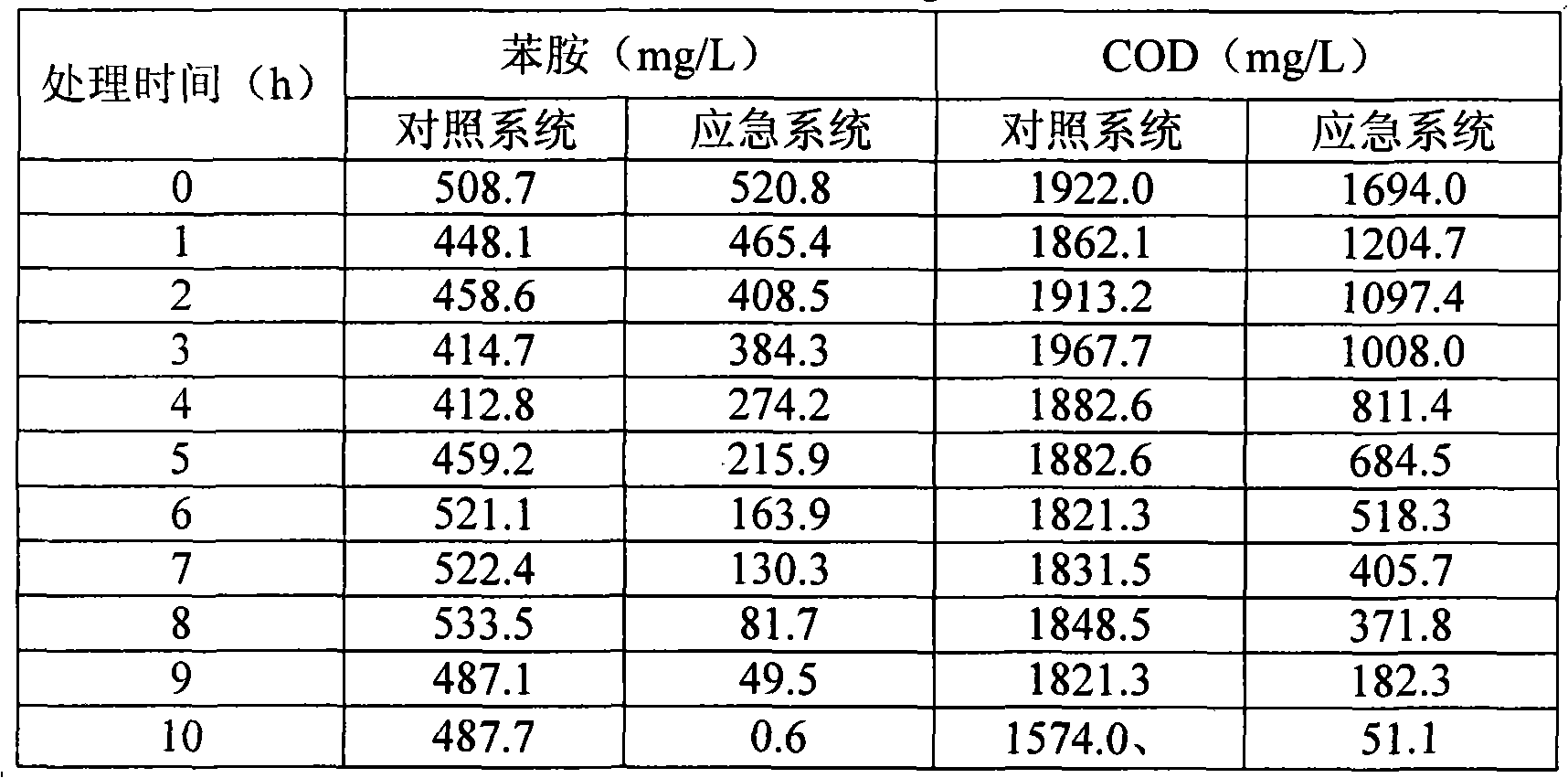Effective phenylamine degrading strain as well as use and use method thereof
An aniline-degrading bacteria and high-efficiency technology, applied in chemical instruments and methods, biochemical equipment and methods, microorganism-based methods, etc., can solve the problems of high toxicity of aniline, difficult degradation, slow degradation rate, etc. Ease of operation and robust effect
- Summary
- Abstract
- Description
- Claims
- Application Information
AI Technical Summary
Problems solved by technology
Method used
Image
Examples
Embodiment 1
[0011] Example 1: Screening and isolation of aniline-degrading bacteria Rhodoccocus sp.AN-P1 and treatment of aniline wastewater
[0012] Collect activated sludge from the aerobic pool of Chengdu No. 1 Sewage Treatment Plant. The sludge samples were enriched and cultured at 10% inoculum volume at 30°C and 160r / min, gradually increasing the concentration of aniline. Then streak and separate on MSB agar plates containing 1000mg / L aniline, select colonies with different morphological characteristics, retransfer to MSB medium with 1000mg / L aniline, culture under the same conditions to verify its aniline degradation ability, and further purify Until a pure culture strain with degradation ability is obtained.
[0013] Synthetic Medium (MSB): Contains Na per 1L 2 HPO 4 2g, KH 2 PO 4 0.5g, MgSO 4 ·7H 2 O 0.3g, trace element solution 5mL, aniline 1g. Add 15g / L agar powder to the solid medium.
[0014] A highly efficient aniline-degrading bacterium AN-P1 was finally isolated and...
Embodiment 2
[0018] Example 2: AN-P1 Simulated Emergency Treatment of Aniline Sudden Pollution Accident Waste Liquid
[0019] A certain amount (500mg / L, 1000mg / L, 2000mg / L) of aniline is added to domestic sewage to simulate the impact of aniline entering the drainage pipe network on the sewage biological treatment system after a sudden pollution accident. The simulated experimental system is divided into two groups, one group is the control system, that is, the conventional activated sludge treatment system (MLSS=2000±100mg / L); the second group is the bio-augmented emergency treatment with the inoculation amount of 0.3‰AN-P1 strain System (MLSS=2000±100 mg / L). 30°C, natural pH, 160rpm shaker cultivation simulation treatment (dissolved oxygen controlled at 3-5mg / L). The 500mg / L group was sampled every 1h to determine the degradation effect of aniline and COD; the 1000mg / L and 2000mg / L groups were sampled every 4h to determine the degradation effect of aniline and COD. The treatment results...
Embodiment 3
[0029] Example 3: Emergency treatment of waste liquid from aniline pollution accident based on SBR process
[0030] Take domestic sewage plant sludge and sewage to build an SBR process system. The reactor numbers are No. 1 (conventional SBR system) and No. 2 (emergency SBR system), with an effective volume of 4.5L, MLSS=2000±100mg / L, and a steam-water ratio of 32: 1 (dissolved oxygen 3~5mg / L), room temperature, HRT during normal operation is 8h, after 7 days of stable operation, add 2000mg / L aniline to No. 1 and No. 2 reactors, and inoculate AN-P1 bacteria into No. , Sampling and determination of aniline content and COD every four hours. The measurement results are shown in Table 2. After the emergency treatment, the normal operation of the SBR process was resumed to treat domestic sewage, and the effluent quality indicators of COD and ammonia nitrogen were tested. The test results are shown in Table 3.
[0031] As shown in Table 4, the test results of aniline and COD show t...
PUM
 Login to View More
Login to View More Abstract
Description
Claims
Application Information
 Login to View More
Login to View More - R&D
- Intellectual Property
- Life Sciences
- Materials
- Tech Scout
- Unparalleled Data Quality
- Higher Quality Content
- 60% Fewer Hallucinations
Browse by: Latest US Patents, China's latest patents, Technical Efficacy Thesaurus, Application Domain, Technology Topic, Popular Technical Reports.
© 2025 PatSnap. All rights reserved.Legal|Privacy policy|Modern Slavery Act Transparency Statement|Sitemap|About US| Contact US: help@patsnap.com



